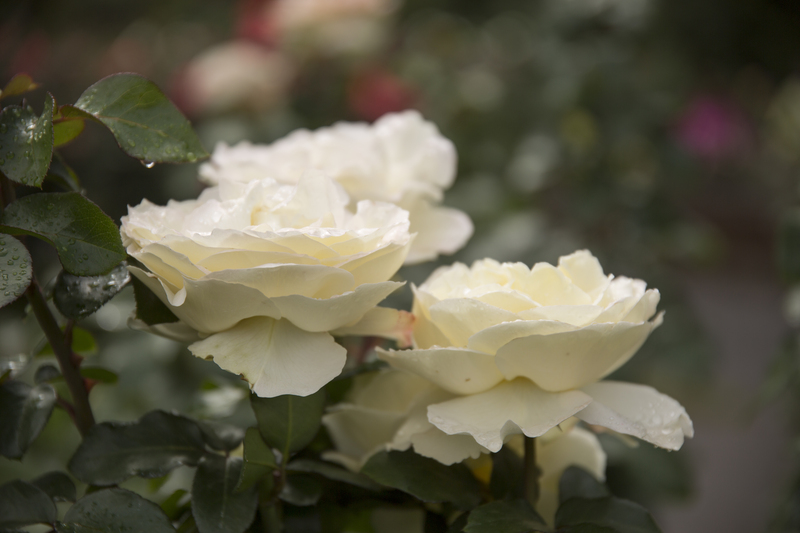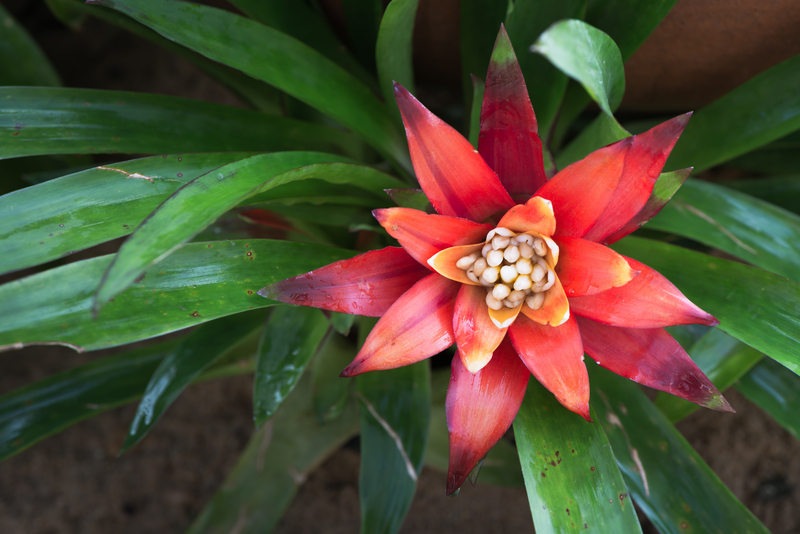The Science Behind Perfect Hedge Trimming Shapes
Posted on 12/09/2025
The Science Behind Perfect Hedge Trimming Shapes
Hedge trimming is both an art and a science. While it may seem like a simple act of shaping greenery, achieving perfectly trimmed hedges involves a deep understanding of plant biology, growth patterns, mathematics, and the right techniques. In this comprehensive article, we will dive into the science behind perfect hedge trimming shapes, exploring everything from the anatomy of plants to the geometry that underlies those beautifully manicured lines and curves. Whether you are a home gardener, a landscaping enthusiast, or a commercial landscaper, this detailed guide will help you master the science and achieve the best results.

Understanding the Basics of Hedge Trimming
What is Hedge Trimming?
Hedge trimming is the gardening process of cutting and shaping the stems and leaves of shrubs or bushes, forming hedges into desired shapes and sizes. Perfect hedge sculpting not only enhances aesthetic appeal but also promotes plant health, density, and longevity.
The Reasons for Shaping Hedges
- Aesthetic Beauty: Well-shaped hedges beautify landscapes, properties, and public spaces.
- Functional Purposes: Hedges serve as privacy screens, noise buffers, and boundary markers.
- Plant Health: Regular shaping removes dead or diseased wood and encourages bushier growth.
- Sunlight Penetration: Proper trimming ensures all parts of the hedge receive sunlight, aiding photosynthesis.
The Science of Plant Growth and Hedge Shapes
Photosynthesis and Sun Exposure
At the core of perfect hedge trimming shapes is the plant's need for sunlight. Photosynthesis powers plant growth, but leaves that are shaded or buried deep inside dense growth receive less light, leading to thinner and weaker hedges.
- Sunlight Capture: The shape of the hedge impacts how effectively leaves capture sunlight. Tapered shapes allow more light to reach lower branches.
- Vertical Hedges: Upright, vertical trimming can result in denser growth at the top and sparse bases due to overshadowing.
The trapezoidal shape (wider at the base, narrower at the top) is considered the ideal hedge profile. It allows maximum light penetration, ensuring even growth from base to tip.
Hormones and Growth Patterns
Plants rely on hormones such as auxins to direct their growth. When you trim a hedge, you redistribute these hormones, which prompts the hedge to send out new shoots, especially at cut points. Understanding these growth responses helps in predicting how a hedge will develop after shaping.
- Trimming stimulates lateral growth, making hedges denser.
- Leaving the hedge untrimmed favors apical dominance--vertical, upward growth at the expense of bushiness.
Plant Species Matter
Different hedge plants--like Buxus (Boxwood), Privet, or Yew--have unique growth habits and leaf structures. Choosing the right variety and understanding its growth rate determines the best shaping strategy.
- Slow growers need less frequent but precise cuts.
- Fast-growing hedges require regular maintenance to hold their shape.
Geometry Meets Greenery: Mathematical Foundations of Hedge Trimming
The Trapezoidal Technique
To achieve the perfect shape for a trimmed hedge, professionals use geometric principles. The golden rule is the trapezoidal profile: the base of the hedge should always be wider than the top. This slight slant ensures sunlight reaches all areas equally.
- A 5-10 degree angle from vertical is optimal. The base projects outward, while the top tapers slightly.
- This shape prevents "shading out" and promotes even foliage from top to bottom.
Symmetry and Precision
Mathematical symmetry gives hedges their stunning appearance. Gardeners use measuring tapes, lines, and stakes to ensure every cut is straight and every curve is smooth. This precision in trimming hedges creates pleasing visual impact and enhances property value.
Popular Hedge Trimming Shapes
- Classic Rectangle: Common for formal hedges, but needs careful maintenance to prevent top-heaviness.
- Spherical or Dome: Found in ornamental gardens; allows maximum light penetration and reduces snow buildup.
- Trapezoid: Most sustainable for plant health and visual balance.
- Topiary Forms: Complex geometric or animal shapes, requiring expert skill, mathematical planning, and frequent attention.
Tools and Technology in Crafting Perfect Hedge Shapes
Essential Hedge Trimming Tools
- Manual Hedge Shears: Classic tool for sharp, precise cuts on small to medium hedges.
- Powered Hedge Trimmers: Efficient for larger or tougher hedges; available in electric, petrol, or cordless forms.
- String Lines and Stakes: Help maintain straight, level cuts and consistent angles.
- Spirit Level: Ensures horizontal accuracy in long, straight hedges.
- Measuring Tape: For even spacing, height, and width.
The Emergence of Laser and Robotic Trimmers
Recent innovations in landscaping have introduced laser guides and even robotic hedge trimmers equipped with sensors and GPS. These tools guarantee ultra-precise, consistent shapes and minimize human error--pushing the boundaries of science-driven hedge maintenance.
Best Practices for Achieving the Best Hedge Trimming Shapes
1. Plan Before You Cut
The secret to perfect results is visualization and planning. Gather inspiration, study the natural structure of your hedge, and set clear design goals.
2. Mark and Measure
- Use string lines and stakes as visual guides.
- Mark corners, heights, and angles for symmetry and precision.
3. Start at the Bottom
Always begin trimming from the base upwards. This allows the natural taper to develop, reducing errors and ensuring the base does not end up narrower than the top.
4. Keep Blades Sharp
- Well-maintained tools provide clean cuts, preventing plant stress and disease.
- Ragged or crushed tips can lead to browning and poor regrowth.
5. Maintain a Tapered Profile
Remember the trapezoidal rule. The bottom should always be wider than the top, even with curved or topiary shapes. Use tools to check your angles frequently.
6. Prune at the Right Time
- Most formal hedges are best trimmed in late spring or early summer after the new growth stabilizes.
- Flowering hedges may require pruning right after blooming to avoid cutting off next year's buds.
7. Don't Over-Trim
Excessive removal of leaves and shoots can stress the plant. Small, frequent trims are better than heavy pruning once or twice a year.
8. Encourage Air Circulation
- Open, well-shaped hedges allow for good airflow, reducing risk of fungal diseases, pests, or rot.
Common Mistakes in Hedge Shaping and Their Solutions
Ignoring the Taper
Neglecting the natural trapezoidal shape often leads to a top-heavy hedge. The base may thin out, resulting in sparse and unhealthy lower foliage.
- Solution: Always angle your cuts to keep the bottom wider.
Cutting at the Wrong Season
Out-of-season trimming can remove flower buds, cause frost damage, or stress the plant.
- Solution: Follow species-specific seasonal guides for optimal results.
Poor Tool Maintenance
Dull or dirty blades can damage stems, increase disease risk, and leave unsightly results.
- Solution: Sharpen tools before each use. Clean with alcohol to prevent disease spread.
Neglecting New Growth
Failing to trim new shoots steadily will quickly destroy the hedge's intended shape and structure.
- Solution: Schedule regular maintenance during the growing season.
Scientific Approaches to Advanced Hedge Designs
The Role of Topiary Art
Topiary takes hedge science to new heights, shaping plants into intricate forms, animals, and geometric wonders. Achieving such designs requires not only artistic vision but a deep understanding of growth patterns, plant response to pruning, and geometric guides.
Computer Modeling and Laser Alignment
Landscapers now use 3D modeling software to simulate hedge shapes before executing them in the garden, while laser levels and guides guarantee precision on challenging curves and angles.
Hedge Maze Construction
The science of hedge mazes depends on accurate layout, geometry, and regular shaping to maintain tall, straight walls without losing foliage at the base. Frequent, skilled maintenance is crucial for leafy density and sharp lines in these complex structures.

Environmental Impact and Sustainability in Hedge Trimming Shapes
Eco-Friendly Trimming Practices
- Electric or manual trimmers reduce fossil fuel emissions.
- Use of mulch and compost: Recycling hedge clippings encourages soil health and biodiversity.
- Safe disposal: Avoid burning waste, which releases harmful greenhouse gases.
Supporting Biodiversity
Perfectly shaped, healthy hedges offer shelter and nesting for birds, insects, and small animals. Leaving some sections untrimmed or flowering boosts local biodiversity.
Conclusion: The Science-Driven Art of Hedge Trimming
Mastering the science behind perfect hedge trimming shapes blends practical knowledge, geometric theory, and plant biology. By adopting the right techniques and respecting horticultural science, you'll foster landscapes that are both beautiful and sustainable. Embrace the scientific foundation--understand growth habits, choose the proper shapes, maintain a careful routine, and use precise tools. Whether you desire classic lines, whimsical topiary, or lush living boundaries, science is the key to hedge trimming perfection.
Frequently Asked Questions (FAQ)
- What is the best shape for a healthy hedge? The trapezoidal (wider at base) shape is optimal for sunlight exposure and dense growth.
- How often should I trim my hedge? Regular, minor trims every few weeks during the growing season keep the shape without stressing the plant.
- Which plants are best for shaped hedges? Boxwood, privet, yew, and holly are top choices due to their dense, resilient foliage.
- Can I use power tools for sculpted shapes? Yes, but manual finishing may be needed for fine details in topiary or curves.
For gardeners seeking to elevate their skills, understanding the science of hedge trimming shapes is a rewarding journey, transforming every green barrier into a living masterpiece.

